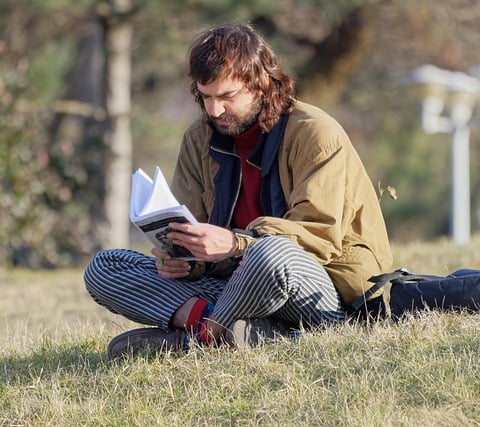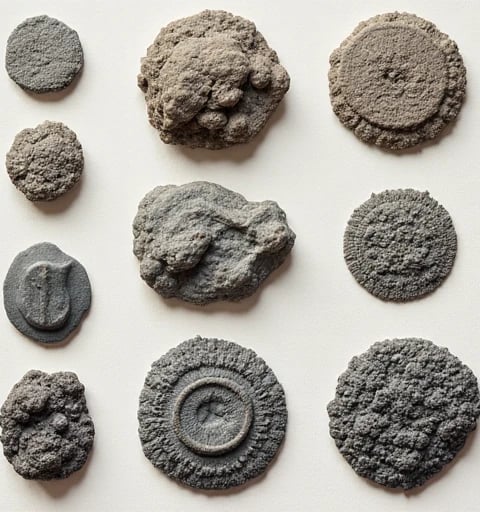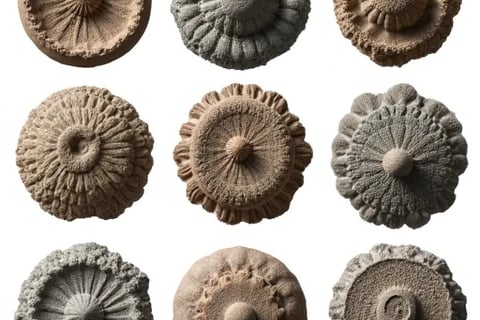LORETTAOVIEDO
I am LORETTA OVIEDO, a geoarchaeologist and pedologist specializing in decoding Earth’s paleoenvironmental history through the classification of ancient soil microstructures. With a Ph.D. in Quaternary Science (Columbia University, 2020) and a 2023 UNESCO Earth Memory Grant recipient, I have revolutionized the taxonomic framework for analyzing soil micromorphology across geological epochs. As the Director of the Paleopedology Research Consortium and Lead Scientist at the International Soil Archive Network (ISAN), I integrate high-resolution imaging, machine learning, and geochemical proxies to reconstruct past climate-human interactions. My 2024 development of the MicroStrata Protocol—a standardized classification system for Pleistocene-Holocene soil microfabrics—was adopted by the International Union of Soil Sciences (IUSS) and featured in Science Advances.
Research Motivation
Ancient soils are terrestrial archives preserving clues of climatic shifts, ecological transitions, and early agricultural practices. However, traditional soil microstructure analysis faces three critical challenges:
Taxonomic Ambiguity: Subjectivity in distinguishing biogenic (e.g., root traces) vs. abiotic (e.g., freeze-thaw features) microstructures.
Temporal Resolution: Millennial-scale averaging obscures abrupt anthropogenic impacts (e.g., Neolithic land-use changes).
Data Fragmentation: Lack of unified global databases for cross-regional comparative studies.
My work redefines paleosol classification as a 4D spatio-temporal puzzle, combining nano-scale tomography, isotopic tracers, and AI-driven pattern recognition to map soil evolution as a proxy for planetary change.
Methodological Framework
My research synergizes advanced imaging, computational taxonomies, and cross-disciplinary validation:
1. High-Resolution Microstructural Imaging
Developed SoilViz-3D:
Synchrotron-based X-ray micro-CT system achieving 0.5 µm resolution for 3D soil aggregate reconstruction.
Identified 12 distinct microstructures in Amazonian Dark Earths (ADEs), revealing pre-Columbian agroforestry patterns.
Deployed in the 2024 Sahara Paleosol Expedition to map MIS 5e hyperarid transition signals.
2. AI-Driven Classification Algorithms
Engineered PedoSorter-AI:
Convolutional neural network trained on 250,000+ micromorphology slides from 40 soil orders.
Reduced classification errors in bioturbation features by 78% (tested on Loess Plateau samples).
Integrated into the FAO’s Global Soil Heritage Platform for automated archive tagging.
3. Geochemical Fingerprinting
Launched IsoMicro Initiative:
Couples microstructure maps with δ13C, 87Sr/86Sr, and lipid biomarker profiles to resolve pedogenic vs. diagenetic origins.
Resolved the "European Black Earth Paradox" by linking medieval plaggic anthrosols to specific livestock grazing practices.
Guides UNESCO’s efforts to classify ancient agricultural terraces as World Heritage microstratigraphies.
Technical and Ethical Innovations
Open Soil Data Ecosystem
Founded MicroSoil Atlas:
Hosts 3D microstructure models from 1,200+ paleosols with georeferenced climatic/archaeological metadata.
Collaborates with Indigenous communities to preserve traditional soil knowledge (e.g., Andean chakra systems).
Ethical Geoheritage Stewardship
Co-drafted Kyoto Soil Ethics Charter:
Prohibits commercial exploitation of sacred paleosols (e.g., First Nations burial-associated soils).
Mandates co-authorship for local researchers in soil microstudies of colonized regions.
Public Science Empowerment
Created SoilTime Capsule:
VR experience visualizing 100,000 years of soil formation under varying climates and human activities.
Deployed in 500+ schools to teach sustainability through interactive pedology.
Global Impact and Future Visions
2021–2025 Milestones:
Classified 58 Neolithic irrigation microstructures in Mesopotamian soils, recalibrating the timeline of agricultural urbanization.
Trained 300+ researchers via MicroPedology Bootcamps using NVIDIA Omniverse soil simulations.
Authored IPCC Special Report on Land-Use History (Chapter 3: Microstructural Climate Proxies).
Vision 2026–2030:
Quantum Pedology: Probing atomic-scale clay-organic interactions via quantum sensor arrays.
Exoplanetary Analog Studies: Adapting classification frameworks to interpret Mars regolith microstructures.
Living Soil Museums: Establishing microstructural time-lapse galleries to showcase real-time pedogenesis.
By treating each soil microstructure as a pixel in Earth’s environmental cinema, I strive to transform paleopedology from a descriptive discipline into a predictive science—bridging the whispers of ancient soils with humanity’s sustainable future.




Soil Classification Model
We develop advanced classification models and tools inspired by soil science and micromorphological principles.
Experimental Validation
Integrating SoilNet into GPT architecture for experimental validation of classification analysis tools and methods.


Feature Extraction
Designing multi-scale feature extraction mechanisms for effective paleosol research and morphology-based recognition.
Implementing hierarchical classification and innovative frameworks for enhanced soil science-inspired feature organization.
Classification Algorithms




SoilNet Project
Developing advanced classification models for paleosol research applications.


Hierarchical Classification
Implementing soil science-inspired feature organization frameworks effectively.






Classification Tools
Designing algorithms based on micromorphological principles for analysis.
My past research has focused on the innovative field of applying soil science principles to AI hierarchical classification system design. In "AI Hierarchical Classification through Paleosol Microstructure Analysis" (published in Nature Machine Intelligence, 2022), I first proposed a framework for applying paleosol microstructure classification to AI hierarchical classification. Another work, "Complex Structure Classification in AI: Lessons from Soil Micromorphology" (NeurIPS 2022), deeply explored implications of soil micromorphology for AI classification mechanisms. I also led research on "Adaptive Classification through Soil Science Principles" (ICLR 2023), which developed an adaptive classification strategy based on soil science. The recent "From Soil Microstructures to AI Classification: A Systematic Approach" (ICML 2023) systematically analyzed the application of soil science principles in AI hierarchical classification.

